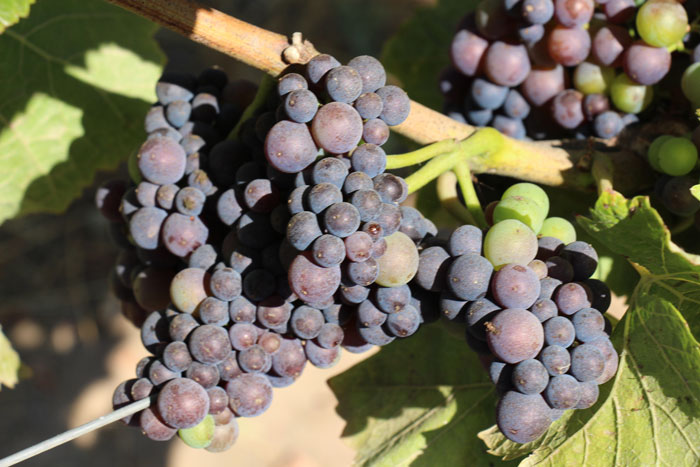
This year’s unusually early harvest for Kessler-Haak Vineyard in the Santa Rita Hills AVA near Lompoc, Calif., began the third week of August. That’s when Dan Kessler picked Pinot Noir at 20º Brix for his sparkling program and Chardonnay at 19º Brix for one of his customers’ sparkling programs.
Still, that was about two weeks later than growers in warmer areas of the AVA started picking their 2015 crop, he reports. In fact, some wineries north of him in the nearby Santa Maria Valley were picking grapes for their sparkling programs at the end of July, he adds.
Kessler, who planted the 30-acre Santa Barbara County vineyard in 2005, grows mostly Pinot Noir along with Chardonnay and some Syrah grapes. Following a 2º jump in Brix to 24º-plus during the last week of August, he pulled Pinot Noir grapes for his winery in the first week of September. Barring any weather-related setbacks, that would put him on track to wrapping up his Pinot Noir and Chardonnay harvest before the end of the month and finishing his Syrah pick in the last half of October. This schedule would have Kessler completing his 2015 harvest about three weeks earlier than usual.
This comes after what he describes as the driest season in his decade of growing grapes. A well and a 2½-acre reservoir provide water for his drip-irrigated vines. His reservoir also is the source of water for his low-volume sprinklers for frost protection.
“I’ve got my fingers crossed,” he says. “So far, the drought hasn’t impacted my ability to supply the vines the water they need. The Lompoc area seems to be in better shape for groundwater reserves than the nearby Santa Ynez Valley.”
Like other Santa Rita Hills growers, Kessler’s tonnage is likely to be down significantly from last year. He attributes that to a lengthy bout of cool, cloudy weather during pollination that extended his Pinot Noir bloom to four weeks or more, depending on clone and location.
“Our cluster size was quite a bit smaller this year than in 2014,” he says. “Last year was a pretty good crop, and we were getting six to seven clusters per pound. This year that has increased to 10 to 12 clusters per pound.
“I tried to crop a little heavier by leaving more clusters on the head this season to provide some leeway later when I thinned the fruit. But I ended up not dropping any clusters because of their low weight. So, my tonnage isn’t down as much as others in the area. I’m seeing some growers with likely yields of about 1 to 1½ tons per acre. Mine should be more in the range of 1½ to 2 tons. Last year I harvested about 3 tons per acre.”
The prolonged bloom produced a wide range of ripening, Kessler explains. “When walking blocks of some of the Pinot Noir clones I might see 10 vines in a row that had finished veraison, and then there would be one whole vine with bright green, hard berries,” he says.
As a result, he’s ended up with a second, later maturing crop. “This second crop, which is at least a month behind the first, is pretty significant, too, with larger berries and clusters,” Kessler says.
Meanwhile, the quality of his crop looks promising, Kessler notes.
“If you’re judicious about not picking the green stuff this year, the quality of the grapes in this area seems to be really good,” he says.
The expected smaller crop should help keep spot prices firm, he adds – that is, if any growers have excess grapes. “I’m seeing buyers looking for fruit, but no one has any to sell,” he says.
Next year he plans to take several steps for boosting production in his vineyards. One is to leave more clusters on the vines. Another is to explore the use of re-grafting vines in certain blocks where he suspects previous frost damage is limiting yields. Over the course of two or three seasons he wants to switch rootstocks on 5 to 10 percent of his underperforming vines.
“We’ve had good luck before re-grafting vines that weren’t producing well,” he says.
About the Author(s)
You May Also Like




